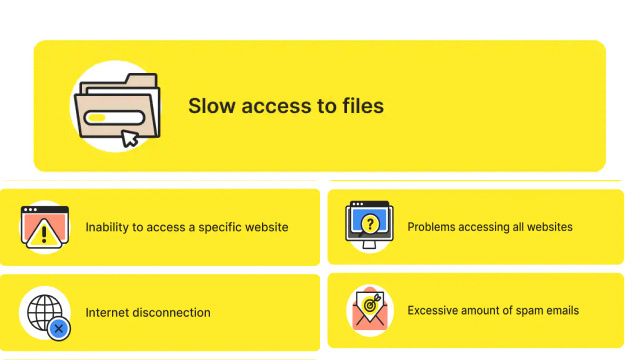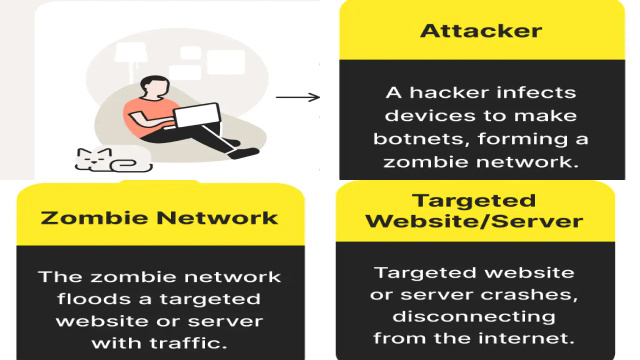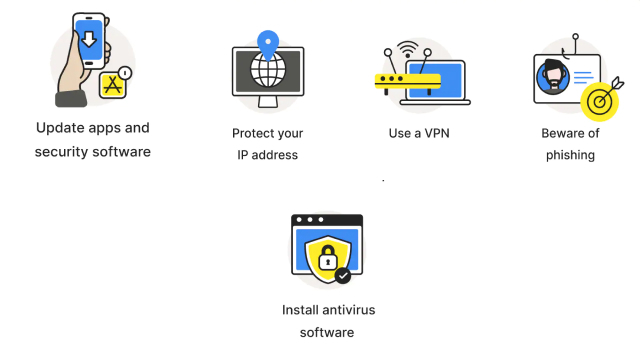Understanding DDoS Attacks: What You Need to Know
DDoS (Distributed Denial of Service) attacks are a type of cyber-attack that aim to make a website or network unavailable by overwhelming it with traffic from multiple sources. The attackers use a network of computers, known as a botnet, to send a huge volume of requests to the targeted website, causing it to slow down or crash. DDoS attacks can be launched for various reasons, including extortion, revenge, activism, and cyber warfare.
To protect against DDoS attacks, organizations can implement various measures, such as deploying anti-DDoS hardware and software solutions, using content delivery networks (CDNs), and designing their network infrastructure with redundancy and scalability in mind. Early detection and response are also crucial, as they can minimize the impact of an ongoing attack.
Understanding DDoS attacks is essential for anyone who owns a website or manages a network, as it enables them to take the necessary precautions to prevent and mitigate such attacks.
How Do DDoS Attacks Work?
DDoS (Distributed Denial of Service) attacks work by flooding a targeted website or network with a massive volume of traffic, making it unavailable to its intended users. These attacks are usually launched using a botnet, which is a network of compromised computers or devices that are controlled by the attacker.
The attacker can use different techniques to create a botnet, such as exploiting vulnerabilities in software or tricking users into installing malware on their devices. Once the botnet is established, the attacker can use it to send a high volume of requests to the targeted website or network, overwhelming its capacity to handle the traffic.
DDoS attacks can be launched using different methods, such as UDP floods, SYN floods, and HTTP floods, each of which exploits a weakness in the target’s network infrastructure. These attacks can have severe consequences, including loss of revenue, damage to reputation, and disruption of essential services.
Understanding how DDoS attacks work is crucial for organizations to protect their online presence and maintain the availability of their services. Implementing appropriate mitigation strategies and investing in anti-DDoS solutions can help prevent or minimize the impact of DDoS attacks.
Types of DDoS Attacks and Their Characteristics
DDoS (Distributed Denial of Service) attacks come in various forms, each with its unique characteristics and methods of execution. The most common types of DDoS attacks include UDP floods, SYN floods, and HTTP floods.
UDP floods involve sending a high volume of User Datagram Protocol (UDP) packets to the targeted server, which can result in a slowdown or crash of the network.
SYN floods exploit vulnerabilities in the Transmission Control Protocol (TCP) handshake process, causing the targeted server to become unresponsive.
HTTP floods target the application layer of a website, using a high volume of requests to overload the server and make the website unavailable.
Other types of DDoS attacks include DNS amplification attacks, which exploit open DNS servers to flood the target with traffic, and Smurf attacks, which use IP broadcast networks to send a high volume of ping requests to the target.
Understanding the different types of DDoS attacks and their characteristics is crucial for organizations to implement appropriate mitigation strategies and protect their online assets from cyber threats.
Common Targets of DDoS Attacks
DDoS (Distributed Denial of Service) attacks can target any website or network, but there are certain types of organizations and industries that are more likely to be targeted due to their high profile or critical nature. Common targets of DDoS attacks include:
- Financial institutions: Banks and other financial institutions are often targeted by DDoS attacks as they handle sensitive financial information and transactions.
- E-commerce websites: Online retailers and e-commerce websites are vulnerable to DDoS attacks, as they depend on their website’s availability to generate revenue.
- Government agencies: Government agencies and public services can be targeted to disrupt essential services or to make a political statement.
- Gaming industry: Online gaming platforms are a common target of DDoS attacks, as they rely heavily on the availability of their servers to provide a seamless gaming experience.
- Media companies: News websites and media outlets can be targeted to disrupt their coverage or to silence opposing views.
Understanding the common targets of DDoS attacks can help organizations in these industries prepare for and mitigate the impact of such attacks. Implementing appropriate security measures and having a response plan in place can minimize the risk of a successful DDoS attack.
Signs Your Website is Under a DDoS Attack
DDoS (Distributed Denial of Service) attacks can be difficult to detect, especially if the attacker is using sophisticated methods to conceal their activities. However, there are some signs that can indicate that your website is under a DDoS attack, including:
- Unusually high traffic: A sudden surge in traffic to your website, especially if it is from unfamiliar IP addresses, can be a sign of a DDoS attack.
- Slow or unresponsive website: If your website is slow to load or becomes unresponsive, it may be due to the server being overwhelmed by traffic from a DDoS attack.
- Error messages: If users are seeing error messages when accessing your website, such as 503 Service Unavailable, it may be due to a DDoS attack.
- Network congestion: If your network is experiencing congestion or slow internet speeds, it may be due to a DDoS attack.
- Unusual patterns in traffic: If traffic to your website is coming in waves or with unusual patterns, it may be a sign of a DDoS attack.
If you suspect that your website is under a DDoS attack, it is essential to act quickly to mitigate the impact of the attack. Contacting your web hosting provider and implementing anti-DDoS solutions can help protect your website from further damage.
Protecting Your Website Against DDoS Attacks
DDoS (Distributed Denial of Service) attacks can cause significant damage to your website, resulting in lost revenue, damaged reputation, and even legal liabilities. To protect your website against DDoS attacks, there are several measures you can take, including:
- DDoS protection services: Consider using a DDoS protection service that can detect and mitigate DDoS attacks in real-time, such as Cloudflare or Akamai.
- Network security: Ensure that your network security is up-to-date and that your firewalls and intrusion detection systems are configured correctly.
- Regular backups: Back up your website regularly, so you can restore it in case of a DDoS attack.
- Scalable hosting: Use scalable hosting services that can handle sudden surges in traffic, such as cloud hosting or content delivery networks (CDNs).
- Educate your staff: Educate your staff on cybersecurity best practices, such as strong passwords, email security, and how to identify and respond to potential DDoS attacks.
By implementing these measures, you can significantly reduce the risk of a DDoS attack on your website. It is also essential to have a response plan in place in case of a DDoS attack to minimize its impact and protect your online assets.
What to Do If Your Website is Under a DDoS Attack
If your website is under a DDoS (Distributed Denial of Service) attack, it is crucial to act quickly to minimize the damage and restore your website’s functionality. Here are some steps you can take:
- Contact your web hosting provider: Inform your web hosting provider immediately so that they can investigate and take necessary actions to mitigate the attack.
- Implement anti-DDoS measures: Use anti-DDoS solutions, such as DDoS protection services or firewalls, to prevent further damage.
- Monitor your website: Monitor your website’s traffic and server logs to identify any unusual activity or signs of a continued DDoS attack.
- Notify your customers: Inform your customers of the situation and provide updates on the status of your website to maintain transparency and build trust.
- Plan for future attacks: Develop a response plan for future DDoS attacks, including measures to prevent and mitigate the impact of such attacks.
By taking swift action and implementing appropriate measures, you can minimize the impact of a DDoS attack on your website and protect your online assets.
Conclusion: Staying Vigilant Against DDoS Attacks
DDoS (Distributed Denial of Service) attacks are a significant threat to businesses and organizations of all sizes, and the consequences of an attack can be severe. It is essential to stay vigilant against these attacks and take appropriate measures to protect your online assets.
To stay safe from DDoS attacks, you should:
- Implement anti-DDoS measures such as using DDoS protection services or firewalls.
- Regularly monitor your website’s traffic and server logs to identify any unusual activity.
- Educate your staff on cybersecurity best practices to prevent attacks from social engineering techniques.
- Have a response plan in place to minimize the impact of a DDoS attack and restore functionality to your website as quickly as possible.
By being proactive and taking necessary measures to prevent and mitigate the impact of DDoS attacks, you can protect your online assets, maintain your reputation, and ensure that your customers can access your website without interruption.




